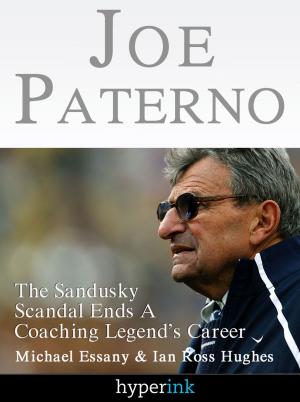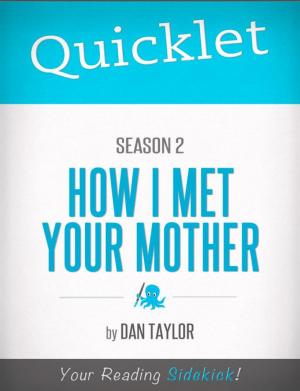Instagram: How a Photo-Sharing App Achieved a $1 Billion Facebook Buyout in 18 Months
Business & Finance, Career Planning & Job Hunting, Entrepreneurship, Entrepreneurship & Small Business, Nonfiction, Science & Nature, Technology| Author: | Sarita Harbour | ISBN: | 9781614646617 |
| Publisher: | Hyperink | Publication: | July 30, 2012 |
| Imprint: | Hyperink | Language: | English |
| Author: | Sarita Harbour |
| ISBN: | 9781614646617 |
| Publisher: | Hyperink |
| Publication: | July 30, 2012 |
| Imprint: | Hyperink |
| Language: | English |
ABOUT THE BOOK
On April 5, 2012 Instagram was valued at 500 million dollars as part of a new round of funding with investors. Just a few days later, Mark Zuckerberg, CEO of Facebook, negotiated to buy it for $1 billion, $300 million cash and $700 million in Facebook shares. CNN called it one of the biggest deals in recent business tech history — not too shabby for a business only 18 months old, and a great inspiration to small companies everywhere. However, Facebook’s acquisition received mixed reviews and many raised eyebrows in the technology and business world.
As details emerge regarding the buyout, and as analysts scramble to make sense of the deal, there are many questions. How did Zuckerberg and Kevin Systrom of Instagram arrive at a figure of $1 billion? What implications does this deal have for Facebook when it goes public in an expected Initial Public Offering in May, 2012? Why does Facebook want Instagram so badly? What can businesses learn from this deal, and how the heck did a tiny company without any revenue become so desirable in just 18 months?
While Instagrams buyout by Facebook was viewed by many as a surprise acquisition, it illustrates the increasing importance of the image-based social-sharing platforms in today’s technology business world. Facebook already had a photo-sharing mobile photo-sharing program, but it was slow to load and clumsy to use. For the past several years, a team had been working on developing a solution. As recently as last summer, rumours circulated about a Facebook iPhone photo-sharing application that would make it easier for users to upload, edit and share their photos. With changes in team members and little to show for their work, nothing more was heard of Facebook’s progress until February 2012, when Business Insider magazine reported new product boss Dirk Stoop was working on a new solution to the problem.
Zuckerberg was reported in the New York Times piece With Instagram Deal Facebook Shows its Worth as saying “We don’t plan on doing many more of these, if any at all, but providing the best photo-sharing experience is one reason why so many people love Facebook and we knew it would be worth bringing these two companies together.” It is safe to assume that Facebook’s own product was not working out as hoped, leading Zuckerberg to buy the best photo-sharing experience instead of developing it.
In addition to examining details of the acquisition, there are broader issues to address. How can businesses use Instagram and Facebook to build their own brands? What does this deal say about Facebook’s predictions for the mobility market and photo-sharing platforms? While Zuckerberg’s official statement is that Instagram will continue operating as a separate platform from Facebook, and that people who have Instagram but aren’t on Facebook can continue using their favorite app, how will Instagram change now that it is owned by Facebook?
In this book, we will address these questions and review a quick history of Instagram. We’ll examine the events of Easter weekend that led to the Instagram buyout, and get a glimpse into the fast-moving world of high tech business and multi-billion dollar companies.
EXCERPT FROM THE BOOK
Mark Zuckerberg and Facebook paid $1 billion for a business that doesn’t have any revenue. Why? In a nutshell, Facebook purchased Instagram to take custody of its users before Facebook competitors did, to strengthen its position in the mobile phone market, and to get rid of a potentially difficult competitor.
As people in the tech world often say, money follows the users. The recent availability of Instagram for Android users had Zuckerberg concerned, especially when the Instragram user population jumped by 10 million people in 10 days...
...buy the book to continue reading!
ABOUT THE BOOK
On April 5, 2012 Instagram was valued at 500 million dollars as part of a new round of funding with investors. Just a few days later, Mark Zuckerberg, CEO of Facebook, negotiated to buy it for $1 billion, $300 million cash and $700 million in Facebook shares. CNN called it one of the biggest deals in recent business tech history — not too shabby for a business only 18 months old, and a great inspiration to small companies everywhere. However, Facebook’s acquisition received mixed reviews and many raised eyebrows in the technology and business world.
As details emerge regarding the buyout, and as analysts scramble to make sense of the deal, there are many questions. How did Zuckerberg and Kevin Systrom of Instagram arrive at a figure of $1 billion? What implications does this deal have for Facebook when it goes public in an expected Initial Public Offering in May, 2012? Why does Facebook want Instagram so badly? What can businesses learn from this deal, and how the heck did a tiny company without any revenue become so desirable in just 18 months?
While Instagrams buyout by Facebook was viewed by many as a surprise acquisition, it illustrates the increasing importance of the image-based social-sharing platforms in today’s technology business world. Facebook already had a photo-sharing mobile photo-sharing program, but it was slow to load and clumsy to use. For the past several years, a team had been working on developing a solution. As recently as last summer, rumours circulated about a Facebook iPhone photo-sharing application that would make it easier for users to upload, edit and share their photos. With changes in team members and little to show for their work, nothing more was heard of Facebook’s progress until February 2012, when Business Insider magazine reported new product boss Dirk Stoop was working on a new solution to the problem.
Zuckerberg was reported in the New York Times piece With Instagram Deal Facebook Shows its Worth as saying “We don’t plan on doing many more of these, if any at all, but providing the best photo-sharing experience is one reason why so many people love Facebook and we knew it would be worth bringing these two companies together.” It is safe to assume that Facebook’s own product was not working out as hoped, leading Zuckerberg to buy the best photo-sharing experience instead of developing it.
In addition to examining details of the acquisition, there are broader issues to address. How can businesses use Instagram and Facebook to build their own brands? What does this deal say about Facebook’s predictions for the mobility market and photo-sharing platforms? While Zuckerberg’s official statement is that Instagram will continue operating as a separate platform from Facebook, and that people who have Instagram but aren’t on Facebook can continue using their favorite app, how will Instagram change now that it is owned by Facebook?
In this book, we will address these questions and review a quick history of Instagram. We’ll examine the events of Easter weekend that led to the Instagram buyout, and get a glimpse into the fast-moving world of high tech business and multi-billion dollar companies.
EXCERPT FROM THE BOOK
Mark Zuckerberg and Facebook paid $1 billion for a business that doesn’t have any revenue. Why? In a nutshell, Facebook purchased Instagram to take custody of its users before Facebook competitors did, to strengthen its position in the mobile phone market, and to get rid of a potentially difficult competitor.
As people in the tech world often say, money follows the users. The recent availability of Instagram for Android users had Zuckerberg concerned, especially when the Instragram user population jumped by 10 million people in 10 days...
...buy the book to continue reading!















